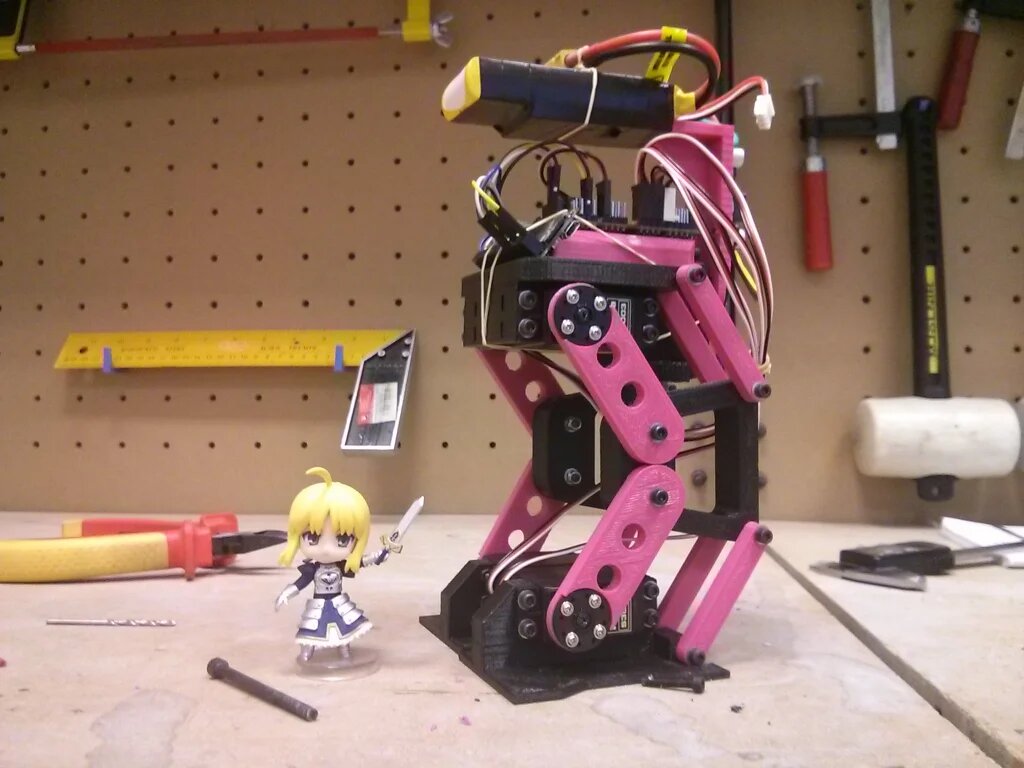Maus
Maus is a five-degree-of-freedom biped robot developed at BQ’s Innovation Department. The design of Maus legs is based on the PLM (Parallel Leg Mechanism) configuration.

PLM is a mechanism commonly used in biped robots. The difference between a PLM leg and a standard leg lies in the use of articulated parallelograms instead of simple segments. This setup is used in two main cases: when you want to keep the orientation between two link ends constant, and when you want to include redundant actuators to increase force output. Since it’s a bit tricky to explain with words alone, here are two diagrams showing the difference between a standard two-DOF leg and a PLM-type leg:

Maus has a unique mechanical feature. Due to its kinematic model, it can’t use its own body, like other bipeds do, to keep its center of gravity over the support surface. Instead, it has an extra degree of freedom that allows it to shift a mass (specifically, the battery) to reposition its center of gravity into a stable equilibrium.
As for electronics, Maus uses an Arietta G25 running Debian Wheezy as its main controller. It’s connected via I2C to a PCA9865 breakout board (which can control up to 16 servos) and a BNO055 IMU (a 3D gyroscope, accelerometer, and compass).
To move the robot, I used oscillators similar to those implemented in Zowi. However, instead of using Obijuan’s ArduSnake library, I developed a new implementation in Python called OctoSnake. The main difference between ArduSnake and OctoSnake is that the former is designed for Arduino, while OctoSnake is meant to be run on Linux SBCs. Also, OctoSnake doesn’t include a servo controller by itself, it relies on external peripheral controllers. In this case, it uses the PCA9865, for which I also developed a small Python library.
That said, Maus movements are not solely based on oscillator output, there’s an added layer of feedback from the IMU. The IMU helps adjust actuator positions in real-time during walking, allowing the robot to adapt to slight terrain disturbances. No, you can’t kick it like in those Boston Dynamics demos! But without that IMU feedback, achieving any kind of dynamic movement would be nearly impossible.
As always, all the source files, 3D parts, and code for MAUS are available on GitHub.

Comments